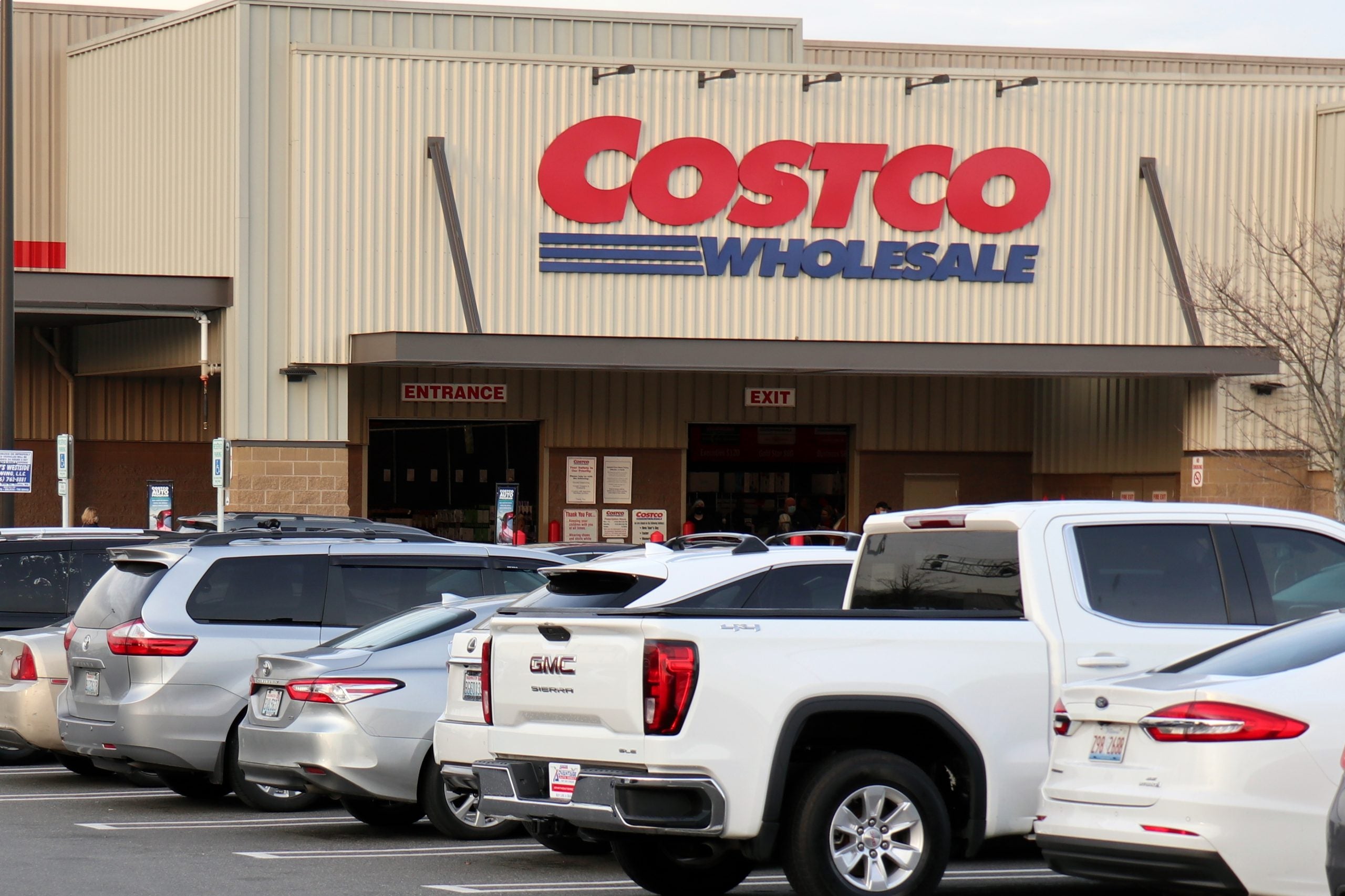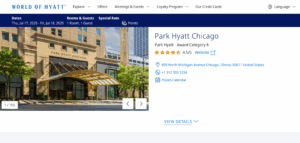Editor’s note: This is a recurring post, regularly updated with new information and offers.
We’ve all been there. You’re checking out after a big purchase or a full day of shopping, and the cashier tells you how much money you’ll save by signing up for a store credit card.
It’s always a tempting offer; after all, who doesn’t want to save money? But while the potential for immediate savings is real, store credit cards usually aren’t your best option.
On the other hand, some store cards make sense for certain shoppers.
Below, we’ll look at four popular store cards and how they stack up against four of our favorite cash-back credit cards.
What is a store credit card?
A store credit card is a card offered by a specific retailer. Many are what’s known as closed-loop cards, meaning you can only use them in that specific store. What we’re looking at today, however, are known as open-loop cards. These cards have a store brand in the name, but you can use them anywhere you would use any other credit card.
However, even though you can use these cards like any other, some of them limit your rewards to their specific store only. Before you sign up for a store credit card, consider how much it will benefit you in the long run.
Related: The best store credit cards
Should I get the Sephora Visa® Credit Card?
The Sephora Visa credit card is appealing for two reasons: It offers a 25% discount on your first purchase within 30 days of account opening and earns the highest bonus on Sephora purchases of any card available.
The information for the Sephora Visa Credit Card has been collected independently by The Points Guy. The card details on this page have not been reviewed or provided by the card issuer.

If you spend a lot of money at Sephora, this may seem like a worthwhile card to have. However, most Sephora customers are still better off with a cash-back card, like the Capital One SavorOne Cash Rewards Credit Card. Here’s a closer look at what the two cards offer:
| Sephora Visa | Capital One SavorOne Cash Rewards | |
| Welcome bonus | Get 25% off your first card purchase at Sephora and a $20 Sephora reward after spending $500 outside Sephora in the first 90 days of account opening | Earn a one time $200 cash bonus welcome bonus after spending $500 in purchases within the first three months of account opening |
| Annual fee | $0 | $0 (see rates and fees) |
| Earning | 4% on Sephora purchases
1% on non-Sephora purchases |
3% on dining
3% at grocery stores (excluding superstores like Walmart® and Target®) 3% on entertainment purchases 3% on popular streaming services 1% on all other purchases |
| Rewards redemption | Receive Sephora Rewards certificates in $5 increments. | Cash back as a statement credit, check or gift card.
Option to redeem through PayPal or on Amazon.com. |
| Other benefits | Earn 2 Beauty Insider points for every dollar spent
Cardmember-only offers |
10% cash back on purchases on Uber and Uber Eats, complimentary Uber One membership through Nov. 14, 2024
Access to Capital One Entertainment No foreign transaction fees (see rates and fees) Master RoadAssist® Service (fees apply) Extended warranty protection |
Verdict: If you spend more of your budget at Sephora than you do on food, the Sephora Visa card might be worth it for you.
Otherwise, you’re much better off getting the SavorOne and using its larger welcome bonus and higher cash-back earning rate to help cover your Sephora splurges.
For more details, read our full review of the Capital One SavorOne card.
Apply here: Capital One SavorOne Cash Rewards Credit Card
Should I get the Apple Card?
The Apple Card can seem like an obvious choice if you’re about to make a large Apple purchase.
The information for the Apple Card has been collected independently by The Points Guy. The card details on this page have not been reviewed or provided by the card issuer.

But while it will earn you bonus rewards on your big purchase, it isn’t necessarily the best credit card for Apple purchases. Let’s check out how it compares to the Blue Cash Everyday® Card from American Express:
| Apple Card | Blue Cash Everyday® Card from American Express | |
| Welcome offer | None | Earn $200 cash back after spending $2,000 on your new card in the first six months of card membership |
| Annual fee | $0 | $0 (see rates and fees) |
| Earning | 3% on Apple, T-Mobile, Nike, Uber, Uber Eats, Panera, Walgreens, and Exxon Mobil purchases
2% when you use Apple Pay 1% on all other purchases (when you use your card number for online purchases or use your titanium card in-store) |
3% at U.S. supermarkets (on up to $6,000 in purchases annually, then 1%)
3% on U.S. online retail purchases (on up to $6,000 in purchases annually, then 1%) 3% at U.S. gas stations (on up to $6,000 in purchases annually, then 1%) 1% on all other purchases |
| Rewards redemption | Apple Cash is applied to your account, so you can use it directly by paying with your card through Apple Pay or receive it as a statement credit. | Redeem cash back as a statement credit. |
| Other benefits | Option to pay for Apple products over time without interest.
Access to card quickly upon approval through Apple Pay |
Purchase protection*
Access to American Express Experiences Split-pay feature for group purchases $84 Disney Bundle credit, paid in $7 monthly statement credits when you use your card to spend $9.99 or more each month on a Disney Bundle subscription (subject to auto-renewal) $180 Home Chef credit, paid in up to $15 in statement credits per month when you use your card for your Home Chef purchases (subject to auto-renewal) Car rental loss and damage insurance** Enrollment required for select benefits |
* Eligibility and benefit levels vary by card. Terms, conditions and limitations apply. Visit americanexpress.com/benefitsguide for details. Policies are underwritten by AMEX Assurance Company.
** Eligibility and benefit levels vary by card. Not all vehicle types or rentals are covered, and geographic restrictions apply. Terms, conditions and limitations apply. Visit americanexpress.com/benefitsguide for details. Policies are underwritten by AMEX Assurance Company. Coverage is offered through American Express Travel Related Services Company, Inc.
Verdict: If a major Apple purchase is prompting you to consider the Apple Card, you’re better off getting the Amex Blue Cash Everyday card, since you can make your Apple purchase online and earn 3% back with it.
Plus, your purchase can help you reach the spending requirement to earn the welcome bonus on your card, earning you even more with your purchase. And you’ll have peace of mind knowing that your new item is protected against accidental damage or theft by American Express purchase protection, which the Apple Card doesn’t offer.
If you find yourself using Apple Pay and being able to earn 2% with the Apple Card on a lot of purchases that would fall under the 1% category for the Amex Blue Cash Everyday, you might decide that the Apple Card is the better card for you.
However, if you do most of your shopping online, earning 3% back on your Apple purchases as well as your grocery and gas purchases with the Blue Cash Everyday card is definitely your better option.
For more details, read our full review of the Amex Blue Cash Everyday Card.
Apply here: Blue Cash Everyday Card from American Express
Should I get the Prime Visa card?
If you’re a loyal Amazon shopper, you’ve almost certainly been tempted by the savings Amazon promises if you sign up for the Prime Visa during checkout.

And the Prime Visa is a good card — in some cases. But here’s how it stacks up against the Chase Freedom Flex:
| Prime Visa | Chase Freedom Flex | |
| Welcome bonus | Get a $100 Amazon gift card instantly upon approval | Earn $200 cash back after spending $500 on purchases in the first three months from account opening |
| Annual fee | $0, but Prime membership ($139 annually) is required | $0 |
| Earning | 5% at Amazon, Whole Foods, Amazon Fresh, and Chase Travel
2% at restaurants and gas stations, local transit and commuting (including rideshare) 1% on all other purchases
|
5% on rotating quarterly categories (on up to $1,500 spent, then 1%); activation required
5% on travel purchased through Chase Ultimate Rewards 5% on Lyft (through March 2025) 3% on dining, including takeout and eligible delivery services 3% on drugstore purchases 1% on all other purchases |
| Rewards redemption | Redeem for eligible purchases at Amazon.com or for cash back through a statement credit or electronic deposit into an eligible checking or savings account | Redeem for cash, gift cards or travel, or pay with points for eligible products and services |
| Other benefits | No foreign transaction fees | Complimentary three-month DoorDash membership (when you sign up by Dec. 31, 2024) |
Verdict: If you spend a significant portion of your budget at Amazon and Whole Foods and want the simplest path to earning 5% on your spending, the Prime Visa is an excellent option.
However, if you spend enough to maximize the Freedom Flex 5% categories and dine out often, you’ll benefit from its higher welcome bonus and dining earnings enough to make it your better option.
Plus, you can still use it to earn 5% on your Amazon spending by purchasing Amazon gift cards from stores in the quarterly categories (currently grocery stores, for example) and using those to do your Amazon shopping.
For more details, check out our full review of the Freedom Flex.
Apply here: Chase Freedom Flex
Should I get the Costco Card?
If you’re a Costco member, chances are good that you spend plenty of money there and want to ensure you’re earning rewards on that spending. And when it comes to earning credit card rewards, Costco has the added complication of only accepting cards in the Visa network, so you might miss out on some earnings if your favorite card is part of a different network.

The Costco Anywhere Visa® Card by Citi (see rates and fees) is one of our favorite store cards, but that doesn’t mean it’s the best choice for everyone. Let’s compare it to a worthy alternative:
| Costco Anywhere Visa | Wells Fargo Active Cash® Card (rates and fees) | |
| Welcome bonus | None | Earn a $200 cash rewards bonus when you spend $500 in purchases in the first three months |
| Annual fee | $0, but a Costco membership is required ($60 annually) | $0 |
| Earning | 4% on eligible gas and EV charging (for the first $7,000 per year, 1% after that)
3% on restaurants and eligible travel 2% on all other purchases from Costco and Costco.com 1% on all other purchases |
2% cash rewards on purchases |
| Rewards redemption | Rewards are issued annually after your February billing statement closes. You will receive a credit card reward certificate that you can redeem at Costco for merchandise or cash back | Redeem to offset eligible purchases, as a statement credit, for cash at a Wells Fargo ATM, gift cards or through PayPal |
| Other benefits | Purchase protection | Cellphone protection up to $600 against damage or theft when you pay your monthly cellphone bill with the card (subject to a $25 deductible) |
Verdict: It’s worth noting that both cards earn 2% on Costco purchases. Beyond that, if you spend most of your money on gas, restaurants and travel, the Costco Anywhere Visa has an earning structure that will benefit you most.
However, if you spend regularly on purchases that fall outside of those categories, you’ll get more rewards from the consistent 2% earnings on the Active Cash. Plus, its $200 cash rewards bonus is a nice additional perk.
For more details, read our full review of the Costco Anywhere Visa and our full review of the Wells Fargo Active Cash cards.
Apply here: Costco Anywhere Visa Card by Citi and Wells Fargo Active Cash Card
Other ways to save at your favorite stores
Having a card that earns extra rewards at your favorite stores isn’t the only way to earn on your spending there. Here are some of our other favorite ways to save regardless of where we’re shopping.
Use a shopping portal
Always use a shopping portal when you shop online. Sites like Rakuten allow you to earn additional cash back or rewards points on many store purchases.

Check your merchant offers
Check the merchant offers on all your cards regularly, and add any that you think you might use. We recommend using a note on your phone to keep track of which offers are on which cards so you can easily reference them when you’re ready to make a purchase.
Buy gift cards
If you have a credit card that earns bonus points for shopping at grocery or office supply stores, you can purchase gift cards from these stores for the ones you want to make a purchase from. For instance, since grocery stores are currently one of the 5% categories on the Freedom Flex, you could buy a Sephora or Amazon gift card from your local grocery store and earn 5% on that purchase.
This strategy requires an extra step but allows you to earn bonus points on specific store purchases without having to get a store credit card.
Bottom line
We generally recommend skipping the store credit card and signing up for a rewards card with a better sign-up bonus and earning structure. However, some store cards are exceptions, like the Costco one.
Regardless, make sure you treat a store credit card decision like any other major financial decision and do your research rather than falling for a tempting offer at the cash register. No matter where you land, you’ll feel good knowing you’re earning solid rewards on your spending.
For Capital One products listed on this page, some of the above benefits are provided by Visa® or Mastercard® and may vary by product. See the respective Guide to Benefits for details, as terms and exclusions apply
For rates and fees of the Amex Blue Cash Everyday, click here.
For rates and fees of the Wells Fargo Active Cash, click here.




